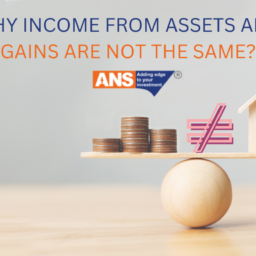
Passive income has become a cult these days; there are umpteen ways to earn and have a stable source of income. Mutual funds are by far considered the most popular and trusted way of investment that gives guaranteed returns.
An Investor can invest either in funds or assets. He can choose equity debts or gold as an investment asset. There are many Asset Management companies in the market, and choosing the right one helps you create a tax-friendly financial portfolio with a plethora of investment options to choose from.
But when we visit a professional asset manager he might use various jargons and financial terms that are difficult to understand. So, here we try to simplify the financial terminology to make you friendly with the world of mutual funds.
We immediately think of mutual funds when we hear words like “bonds” and “stocks.”
Mutual funds act as a magnet, drawing investors in to invest in stocks, bonds, and other money market instruments and assets.
Let us get started…
Starting with the basic,
Mutual funds in India are differentiated into two types, based on their investment structure, whether they are open-ended or closed-ended funds.
- The difference between open-ended vs. close-ended funds is a function of investment flexibility and the ease with which they can or cannot be bought or sold. While open-ended funds can be purchased or sold anytime, the closed-ended funds can be bought only during their launch and can be redeemed when the fund investment tenure is over.
After getting used to closed-ended and open-ended funds, it is imperative to know how income funds and interval funds work.
- Income funds are ULIP (unit-linked investment plan) or any other type of investment that aims at generating an income stream for investors by investing in fixed income securities like government securities or gsecs/gilts, bonds, debentures, and fixed deposits.
- Whereas an Interval fund is, a type of Investment Company that periodically offers to repurchase its shares from shareholders. That is, the fund gradually offers to buy back a specified percentage of the shares from shareholders. Shareholders can not accept these offers and can not sell their shares back to the fund.
- We can easily extend our investment journey beyond our country’s border. International funds are all about investing in companies located anywhere in the world outside of their investors’ country of residence
Mutual funds also allow us to develop our own property by providing capital to Real Estate companies. If the sector grows, then the fund makes a good return. That is what real estate funds are all about.
- Through Commodity funds, we can invest in raw materials or agricultural goods like gold, silver, or natural resources such as oil and natural gas. In addition, agricultural commodities like wheat, rice, etc.
- ETFs or (Exchange- traded-fund)is a type of pooled investment security that operates much like a mutual fund. Usually, ETFs will track a particular index, sector, commodity, or other assets, but unlike mutual funds, ETFs can be purchased or sold on a stock exchange the same way a regular stock can.
Mutual funds also teach us how to invest in a disciplined manner for which we can enjoy leisure trips and can be stress-free during times of emergency or crisis.
- SIP (systematic investment plan) allows an investor to invest a fixed amount of money at pre-defined intervals in the selected mutual fund scheme. By investing in SIP you invest in a time-bound way and you do not have to worry about the market dynamics in the long run you would benefit due to average costing and power of compounding.
- SWP-SWP or systematic withdrawal plan is a mutual fund investment plan, through which investors can withdraw fixed amounts at regular intervals, for example – monthly/ quarterly/ yearly from the investment you make in any mutual fund scheme.
- When you invest in a mutual fund in a lump sum, it means a single, bulk amount locked into a one-time mutual fund investment. This is as opposed to spreading it out over time, like in SIP (Systematic Investment Plans)
- SEBI formulates policies, regulates, and supervises mutual funds to protect the interest of the investors
- Asset management fund-AUM or Assets under Management is the total market value of investments managed by an asset management company (AMCs).
- NAV stands for Net Asset Value.Net Asset Value (NAV) represents the value of a mutual fund. It gives you the value per share of the fund at any given point in time. The NAV of a fund is updated once per day at the end of the trading session. The NAV helps to analyze if the fund is overvalued or undervalued. This helps you to make better investment decisions.
CONCLUSION
These are some of the important terms you may come across when you start investing in mutual funds. Moreover, as you continue your investment journey, these terms will become your daily language (they will not be jargon anymore). There may be some other terms you may encounter when you start investing, but that is what learning is all about.















